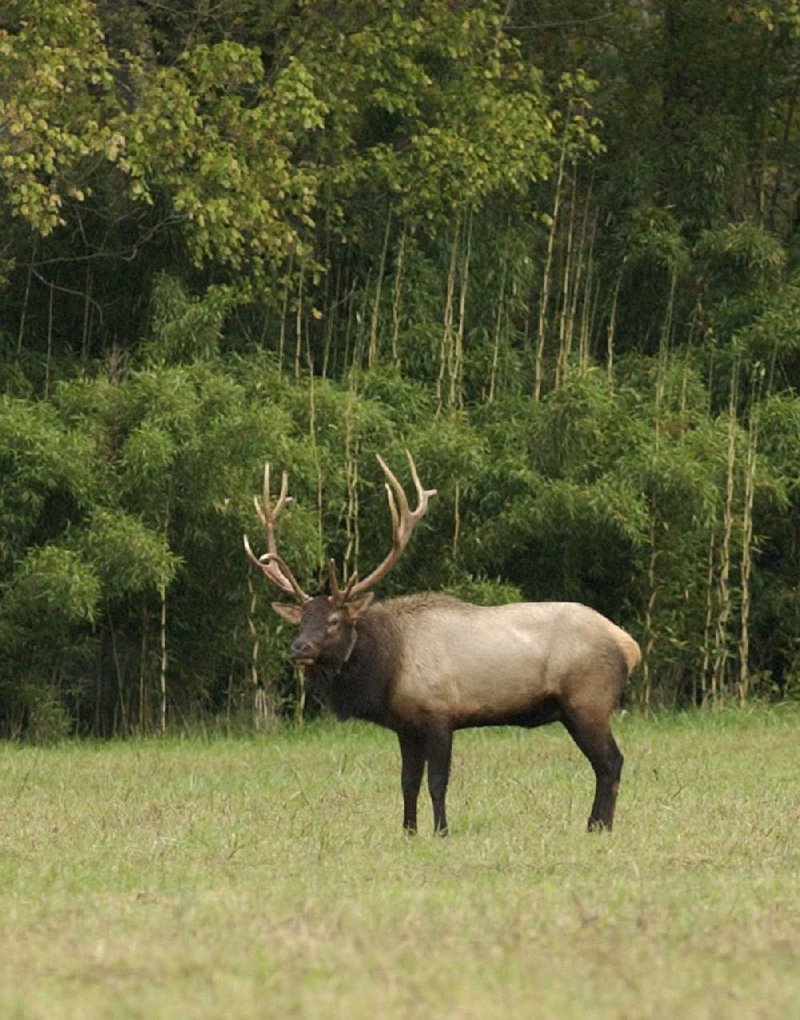The Arkansas Game and Fish Commission confirmed Wednesday that 18 more deer and one more elk in north Arkansas tested positive for chronic wasting disease, bringing the total number to 22.
The latest batch of samples contained 49 deer and elk, which means that the prevalence rate for chronic wasting disease is much higher than Game and Fish biologists anticipated, said Brad Carner, chief of the commission's wildlife management division. Four of the animals that tested positive for CWD came from outside the sampling area along the Buffalo River, including one that was collected in Boone County.
"It's pretty shocking," Carner said. "It is definitely way more prevalent and more widespread than we ever expected to see."
Carner said that he initially anticipated that the prevalence rate would be about 1 percent. The exact percentage is unknown because all the samples have not been completed, but 19 CWD-positive animals in a batch of 49 equals nearly 39 percent.
The Game and Fish Commission will suspend the killing of deer and elk in the original target area between Ponca and Pruitt, Carner said. Instead, biologists will try to determine how widespread the CWD is by collecting all road-killed deer and sick deer or deer in poor condition in a 50-mile range that will touch 20 counties.
"We want to go big and stretch out as far as we can and get as many samples from roadkills and sick deer as we reasonably can," Carner said.
Appearance is not a reliable indicator, though. Carner said that biologists collected 28 animals March 14-15 that appeared to be healthy, but nine tested positive for CWD," Carner said.
"That's 32 percent. That's an extremely high rate," Carner said.
With CWD confirmed outside the original sample area, Carner said he hopes to contain it within the 50-mile buffer zone.
"I don't think it has gotten to the Arkansas River or gone past it, but at this point we don't know," Carner said. "I don't think it has, but what we thought before is out the window."
Carner said the high prevalence rate indicates that chronic wasting disease has been in the Ozarks longer than biologists believed.
"We expected that where we got one positive we'd get multiple positives in the immediate vicinity," Carner said."We're seeing that, but we do have these outliers, the roadkills and sick animals. That does indicated that it's been here for quite some time and it's flown under the radar."
Acknowledging the possibility that CWD might have spread beyond the Ozarks, Carner said the commission will prioritize investigating reports of sick deer and suspicious roadkills in other parts of the state, including the far south.
"That'll be a scenario where you drop what you're doing and go get those," Carner said. "We're going to have to make getting roadkill and sick animals a priority statewide, but we're going to focus on this 20-county area for the next month or so. We're picking up a roadkill or two every day up here."
Carner said the commission's deer management strategy in the Ozarks will change dramatically, beginning in the 2016-17 deer season. He said regulations for the Ozarks will encourage hunters to kill large numbers of does and reduce the age of the deer herd.
"We've got some work to do," Carner said. "From our snapshot of data we've looked at, of the 225 samples we've taken, 160 were does, and 48 percent of them were 3.5 years or older," Carner said. "That's a deer herd that needs more does removed.
"There's still a lot of ingrained resistance to shooting does among a lot of people in that part of the state. We're going to have to work through that and encourage people to be more comfortable shooting does."
Sports on 03/24/2016
